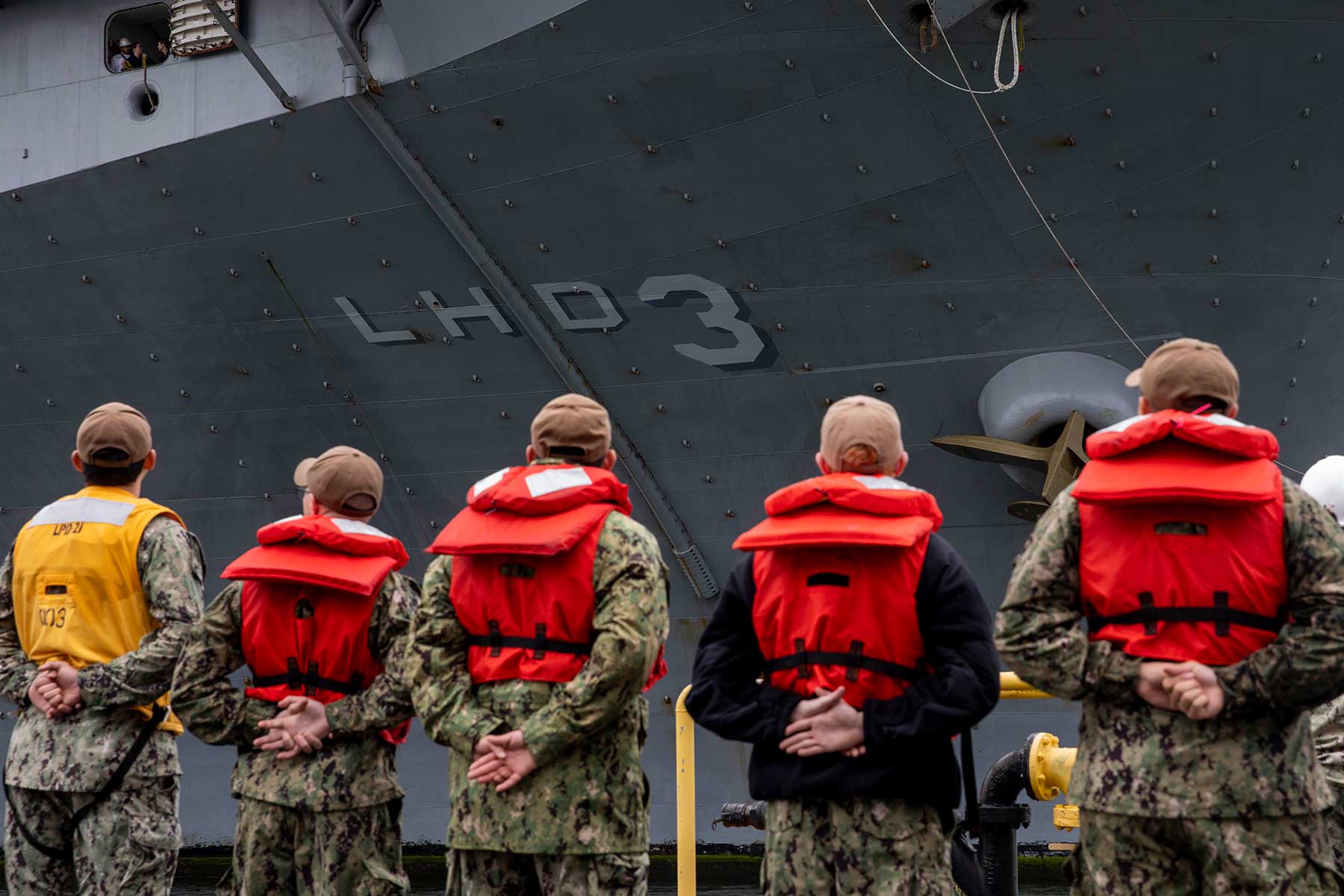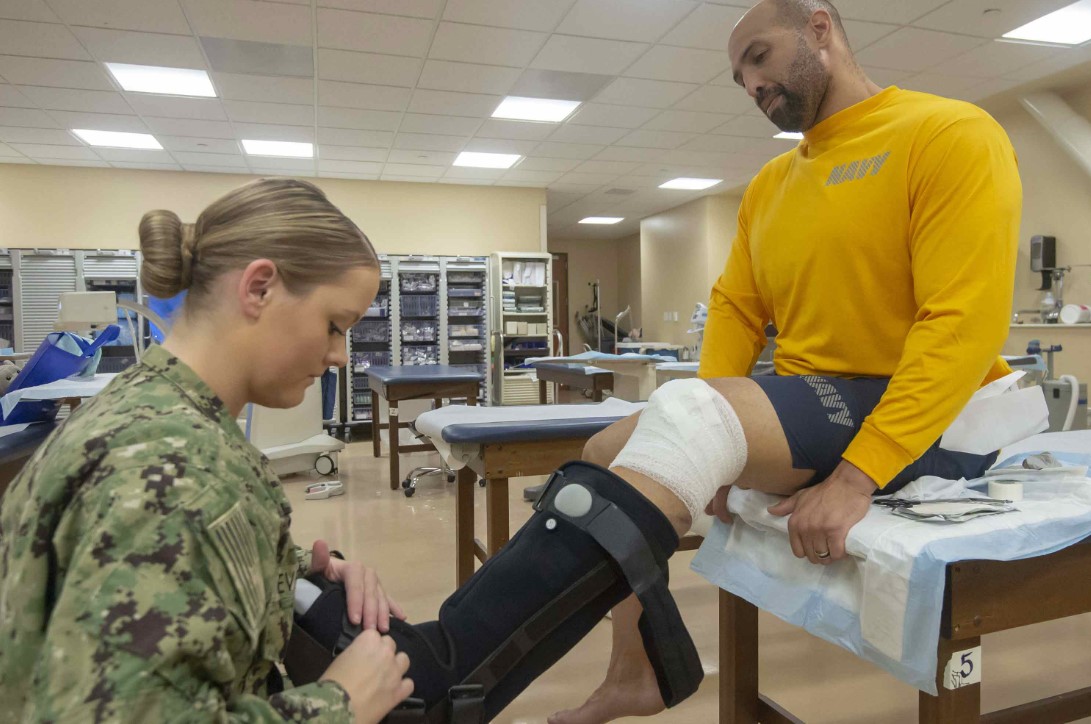The United States Navy, as the largest naval force globally, plays a critical role in maintaining maritime security and power projection. According to Statista, in 2021, the Navy boasted approximately 343,223 personnel and operated with a budget of $162.9 billion. However, the unique environment of naval service presents a distinct set of health challenges.
This article will explore the various health risks faced by naval personnel. Understanding these risks is essential for ensuring the well-being of those serving in the maritime branch of the U.S. Armed Forces.
Table of Contents
1. Exposure to Environmental Hazards
Naval service often entails extended exposure to environmental hazards, which can significantly impact the health and well-being of personnel.
According to the NIH, the most common environmental hazards reported by officers aboard Navy ships include vibration (63.7%) and air pollution (56.2%). Submarine officers face additional challenges, with a high prevalence of issues related to lack of personal space (72.4%) and air pollution (67.3%).
The study used the Job-Related Affective Well-Being Scale (JAWS) to assess the impact of these hazards on officers’ well-being. It found a strong correlation between exposure to environmental hazards and lower JAWS scores.
For ship officers, exposure to noise, air pollution, vibration, thermal discomfort, and cramped conditions were significantly linked to reduced well-being. Submarine officers, in addition to these factors, also reported exposure to fire, burning, and electrical shock as contributing to lower JAWS scores.
These findings highlight the importance of addressing environmental hazards in the naval environment to protect the health and well-being of military personnel.
How can we reduce exposure to hazards?
To reduce exposure to hazards in the Navy, implement rigorous safety protocols, conduct regular training, and use protective equipment. Regular health screenings, effective hazard communication, and adherence to maintenance schedules for equipment can also help mitigate risks. Additionally, promoting a culture of safety awareness is crucial.

2. Exposure to Aqueous Film-Forming Foam (AFFF)
Exposure to AFFF is a significant health risk for naval personnel due to the harmful chemicals it contains, notably per- and poly-fluoroalkyl substances (PFAS). AFFF, used extensively for fire suppression on naval vessels, includes these persistent chemicals that linger in the environment and accumulate in the human body.
TruLaw notes that prolonged exposure to AFFF has been linked to serious health issues. PFAS are known for their potential to cause cancer, including prostate, kidney, and testicular cancers.
Additionally, these chemicals can lead to liver damage and endocrine disruption, affecting hormone levels and potentially impacting reproductive health and metabolism. The dangers associated with PFAS exposure have led to increasing concern and scrutiny over AFFF use.
Growing awareness of these health risks has led to legal actions, including the rise in the AFFF lawsuit by Navy personnel. This lawsuit addresses claims from military personnel and veterans who have experienced health problems due to AFFF exposure.
The legal proceedings emphasize the need for better monitoring and mitigation strategies to protect naval service members from the harmful effects of AFFF. Ensuring safer practices and providing adequate health screenings are crucial for addressing and reducing these risks.
What replaces AFFF foam?
AFFF foam is increasingly being replaced by fluorine-free foams, which are less toxic and environmentally harmful. These alternatives use safer chemicals to suppress fires effectively, reducing the risks associated with PFAS, the harmful substances found in AFFF foams.

3. Mental Health Strain from Extended Deployments
Extended deployments at sea can pose significant psychological challenges for naval personnel. The combination of isolation, stress, and the demanding nature of military service can contribute to a range of mental health issues.
According to USNI News, a significant number of enlisted sailors report feeling severely or extremely stressed. Approximately 41 percent of sailors with ranks between E-1 and E-6 reported high levels of stress.
Additionally, 36 percent of sailors with ranks E-7 to E-9 also indicated experiencing significant stress. These rates have increased since 2019, suggesting a growing concern for the mental health of naval personnel.
The isolation and separation from loved ones experienced during extended deployments can contribute to feelings of loneliness, anxiety, and depression. Additionally, the demanding nature of military life, including long hours, physical challenges, and the constant threat of danger, can exacerbate stress levels.
To manage this stress, the Navy encourages the use of various support strategies. Sailors are advised to seek psychological counseling, participate in stress relief programs, and engage in regular physical exercise. Additionally, promoting strong peer support networks and maintaining open communication channels can be beneficial.
Can you get PTSD from deployment?
Yes, deployment can significantly increase the risk of PTSD. Research indicates that Veterans who deploy are three times more likely to develop PTSD compared to those who do not deploy. This heightened risk underscores the importance of addressing and managing mental health during and after deployment.

4. Increased Risk of Musculoskeletal Injuries
The physical demands of naval service, which often involve performing physically demanding tasks, can significantly increase the risk of musculoskeletal injuries. These injuries can lead to chronic pain, reduced mobility, and long-term health problems.
To address this issue, the UK Royal Navy has launched a kinematics-based medical testing project at “entry” training centers. This project aims to study and mitigate musculoskeletal injuries among sailors and marines.
By using motion capture technology, the project tracks a recruit’s movements across pressure pads to analyze how they distribute their body weight. This data, along with other measurements like height, grip strength, and anatomical position, offers a thorough evaluation of an individual’s musculoskeletal condition.
The project aims to identify sailors at higher risk of musculoskeletal injuries and tailor training to their needs.

5. Exposure to Infectious Diseases
Naval service often involves living and working in close proximity to others, which can increase the risk of infectious disease transmission. Gastrointestinal infections, such as foodborne illnesses, and respiratory illnesses, like the common cold and influenza, are common among naval personnel.
Maintaining good hygiene practices, like disinfecting surfaces and not sharing personal items, is essential to prevent the spread of infectious diseases. Additionally, staying up-to-date on vaccinations is essential for protecting against preventable diseases like measles, mumps, rubella, and influenza.
The Navy also implements measures to prevent the spread of infectious diseases, such as enforcing quarantine procedures for individuals with contagious illnesses. By following these preventive measures, naval personnel can help reduce the risk of infectious disease outbreaks and maintain their overall health.
The unique challenges of naval service pose significant health risks to personnel. Addressing these issues requires a comprehensive approach that involves prevention, early detection, and appropriate medical care. By understanding these risks and taking proactive measures to protect the health of naval personnel, the Navy can ensure the well-being of its sailors.
Related Posts:
- Financial Planning for Health: Balancing Costs and…
- Memorable Unique Squad Name Ideas - For Work & Friends Teams
- Unique Squad Names: Find Your Team's Identity
- 10 Unique Themes for an Unforgettable Bachelorette Party
- Incall vs. Outcall: Service Types Compared (2024)
- The Benefits of Implementing Digital Customer…













